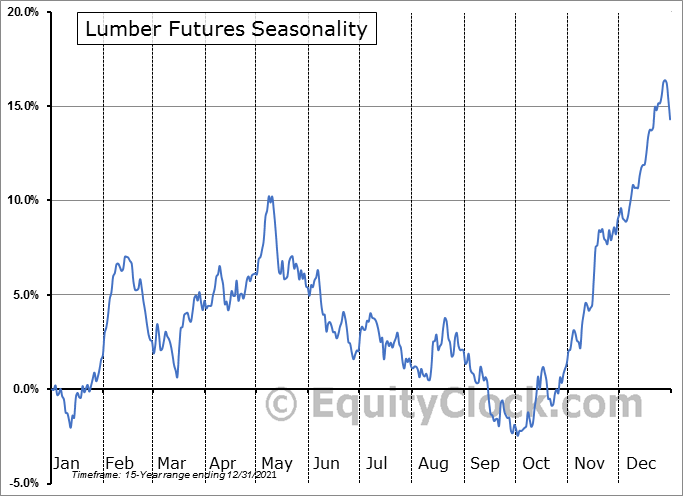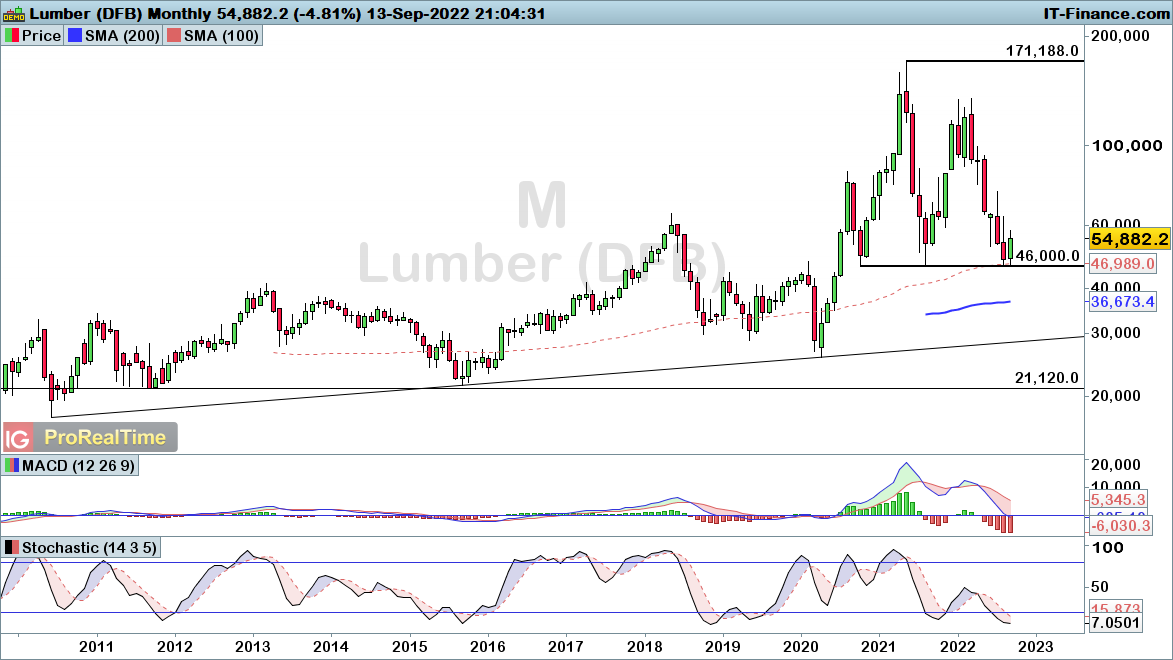Is the 25% Lumber rally just the beginning of the next bull market?
Lumber prices start to recover as we approach key Friday deadline for US freight negotiations. Should they fail, nationwide strikes could help bring a renewed bottom as supply grinds to a halt
 Source: Bloomberg
Source: Bloomberg
Lumber price stem recent bearish trend
Lumber has enjoyed a welcome respite from the incessant selling pressure that has dominated the past eight-months. From the January peak of $1,342, we have seen price steadily tumble into the critical $460 support level reached at the beginning of this month. That represents a 65% decrease in price, bringing respite from the highly elevated prices driven by transport bottlenecks and a surge in building projects throughout Covid. Things are very different some two-years later, with many of the world’s biggest economies facing higher borrowing costs and negative growth. Housebuilders have been warning of potential difficulties as we head into a tight period where the central banks raise rates in a bid to drive down inflation. However, the gains seen over the course of the past week do raise some hope that we could be due a period of upside as price turns higher from a historically critical support level.
US rail strikes could hamper supply
A long-fought battle over wages and employment conditions for US freight workers has come to a head recently, with inflation pressures raising the chance of a strike amongst the 150,000 member-strong labour unions. With negotiations reaching an impasse, there is a strong chance that we see a strike that hits the US economy to the tune of $2 billion a day according to a recent Association of American Railroads report.
A cooling off period ends on Friday 16 September, with many speculating that this could bring strikes or employee lockouts by the railroad corporations. While Congress could extend the cooling off period to continue negotiations, this inability to resolve the current standoff does raise the risk that employees walk out on the industry, leaving gaps that are difficult to fill.
For Lumber, the reliance on freight railroads for transportation around the US is critical, with a given year moving approximately 420,000 carloads of processed timber and wood products. That potential disruption does bring uncertainty over the demand-supply dynamic, with constraints on deliveries bringing a greater willingness to pay higher prices.
Historical trends support the bulls
Seasonal trends do point towards a potential recovery in the final months of the year, with the fourth quarter typically bringing the best period for Lumber. Utilising data over the past 15-years, we can see that year-end price action has typically been the best performing months. That is particularly the case for October through December.
 Source: EquityClock
Source: EquityClock
The statistical breakdown of that performance highlights how those months have an impressive chance of providing positive returns, with all three months providing a gain frequency above the February figure of 60%. Across the three-months, October, November, and December on average provide positive returns 69% of the time (67%, 67%, and 73%).
 Source: EquityClock
Source: EquityClock
$460 the key line in the sand
Looking at lumber prices from a historical perspective, we can see that the past decade has been dominated by an environment of rising prices. That took on a new trajectory once Covid took hold, with prices reaching a peak of $1,711 (per 1000 board feet). However, we have recently seen price fall back to the key $460 support level, which underpinned price throughout the entirety of this two-year period. Thus far we are seeing price turn higher, raising the likelihood of another rebound in price going forward.
 Source: ProRealTime
Source: ProRealTime
From a daily perspective, we can see how price has jumped into the confluence of Fibonacci and trendline resistance, with price turning lower yesterday. The events around Friday’s end to the cooling off period for railroad negotiations could bring major volatility, but the key break we need to see is either a move up through $634 (bullish), or below $460 (bearish). Until then, this crucial resistance zone should be watched closely as a potential area that the bears could come back into play. If they fail to reassert control, we could soon see another $460 bottom develop as supply constraints drive prices higher.
 Source: ProRealTime
Source: ProRealTime






0 Comments
Recommended Comments
There are no comments to display.
Create an account or sign in to comment
You need to be a member in order to leave a comment
Create an account
Sign up for a new account in our community. It's easy!
Register a new accountSign in
Already have an account? Sign in here.
Sign In Now